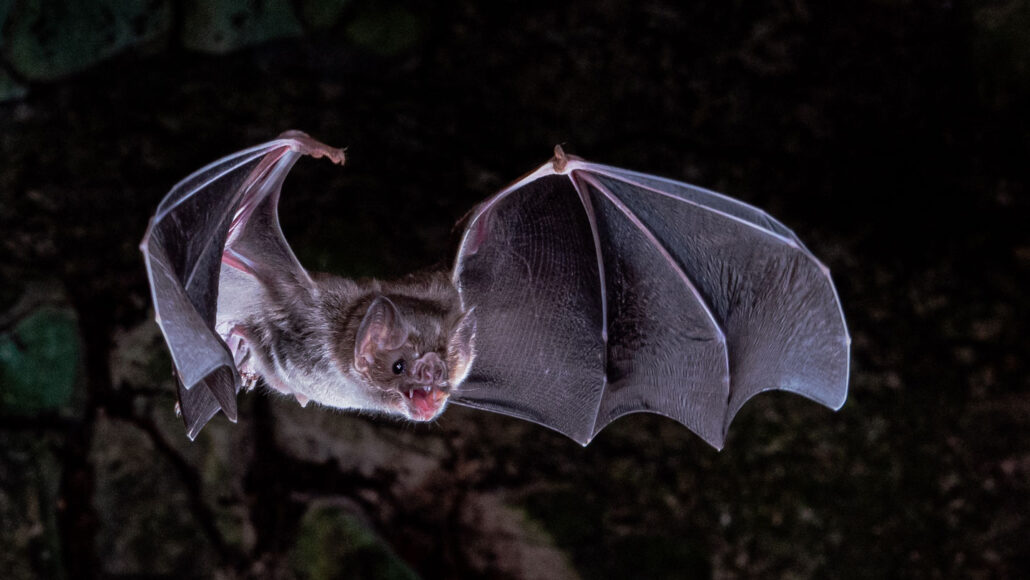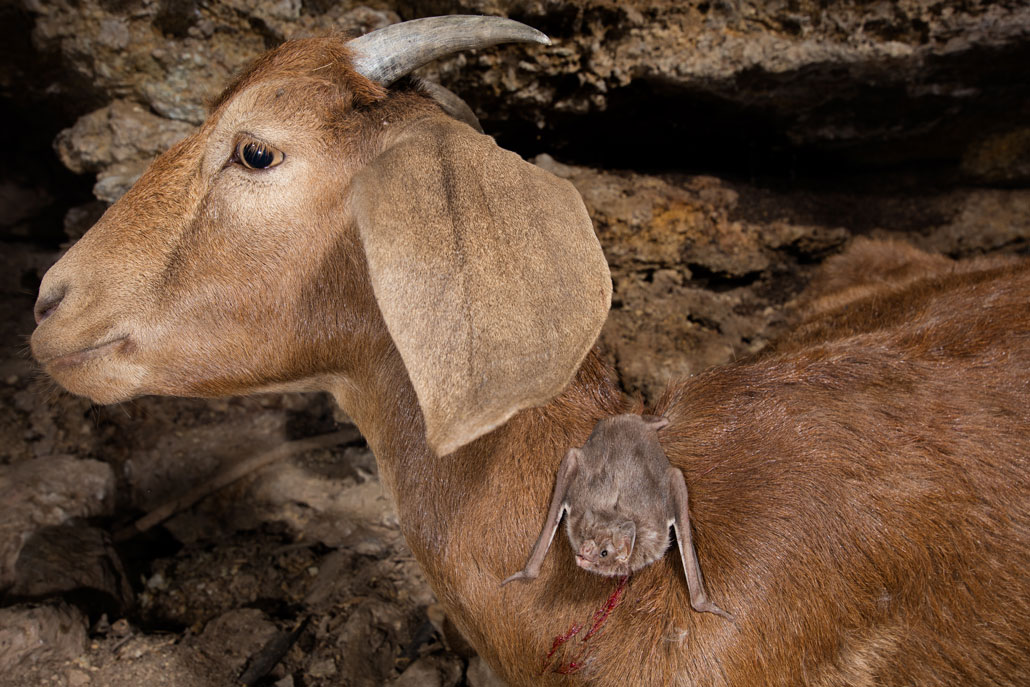Losing some genes may explain how vampire bats can live on blood
No other mammal can exist on a blood-only diet

Vampire bats (one pictured) have evolved to survive on a blood-only diet. The loss of 13 specific genes may have helped them develop this unique ability.
Sherri and Brock Fenton
Surviving on blood alone is no picnic. Vampire bats are the only mammal known to feed exclusively on the stuff. They may have gained this ability by losing some genes, researchers now report.
Vampire bats have developed special feeding behaviors to drink their meals. Their bodies, too, have evolved to thrive on a blood-only diet. But scientists didn’t know what changes in the bats’ DNA might explain these bodily adaptations.
Michael Hiller studies how an animal’s genome — its full set of genes — drives behavior and other traits. He runs a lab at the Senckenberg Society for Nature Research in Frankfurt, Germany. Hiller is part of a team that pieced together the genome of the common vampire bat (Desmodus rotundus). The researchers compared it with the genomes of 26 other bat species, including six from the same family as vampire bats. The team then searched for genes that were now missing or inactive in D. rotundus.
“Sometimes losing genes in evolutionary time frames can actually be adaptive or beneficial,” Hiller says.
The team found 13 genes that were active in other bats but not vampires. In the blood-diners, these genes had changes — mutations — that messed up their instructions. It turned off those genes. Over time, these changes may have led to vampire bats’ unique lifestyle. Hiller’s team shared its new findings March 25 in Science Advances.

Poor taste
Three of the genes were already known to be missing in vampire bats. These genes are linked to sweet and bitter taste receptors in other animals. Without them, vampire bats likely can’t taste as well — all the better for drinking blood.
Loss of another 10 genes showed up for the first time in this study. The researchers looked at what these genes do in other animals to get ideas about how losing them might support a blood-rich diet.
Many of the genes play roles in digestion. Some help boost levels of insulin in the body. This hormone helps the body process sugar from food. But blood doesn’t contain much sugar. If vampire bats have little need for insulin, these genes probably weren’t that useful anymore. Another gene is linked in other mammals to making the stomach acid that breaks down solid food. That gene may have been lost as the vampire bat’s stomach evolved to handle mostly fluid.
Yet another lost gene controls iron absorption in the gut. For most animals, eating too much iron can be toxic. When active, this gene blocks cells in the gut from taking in too much iron. Blood is rich in iron but low in calories, so vampire bats need plenty of it. They must drink up to 1.4 times their own weight during each feed. In the process, they consume a potentially harmful amount of iron.
The researchers now think that losing this gene may help the bats get rid of that extra iron. The gut of vampire bats sheds cells frequently. Without the active gene, these cells may be able to take in huge amounts of iron — then quickly excrete it. That might allow them to avoid an iron overload. This idea is also supported by an earlier study. It found cells full of iron in vampire-bat poop.
One more lost gene may support vampire bats’ social behaviors. In other animals, one role of this gene is to break down a compound produced by nerve cells — one that is important for learning and memory. Vampire bats lead complex social lives that rely on strong memory. And because their bodies don’t store much sugar, vampire bats are susceptible to starvation. Their friends may sometimes help out by sharing regurgitated blood. And they’re more likely to share with bats that previously shared with them. Vampire bats also form long-term bonds and even feed with their friends in the wild. So loss of this gene could help support their socializing.
“I think there are some compelling hypotheses there,” says David Liberles. He works at Temple University in Philadelphia. There he studies how genomes evolve. Liberles didn’t work on this study, but does note that there are two other species of vampire bats. Both feed more on the blood of birds. D. rotundus, in contrast, prefers to drink from mammals. It would be interesting to see if the same genes were also lost in other vampire bats, he says.
Whether dining on blood caused these changes — or the other way round — isn’t known. Either way, those changes likely occurred gradually over millions of years, Hiller says. “Maybe they started drinking more and more blood, and then you have time to better adapt to this very challenging diet.”







